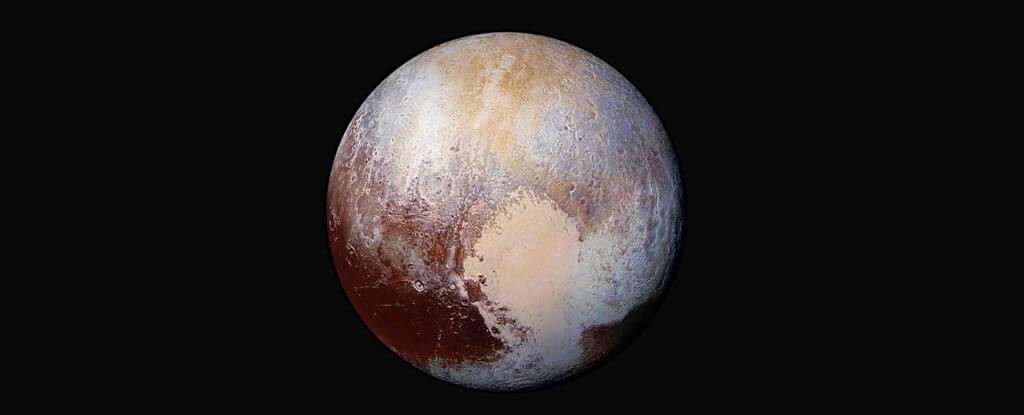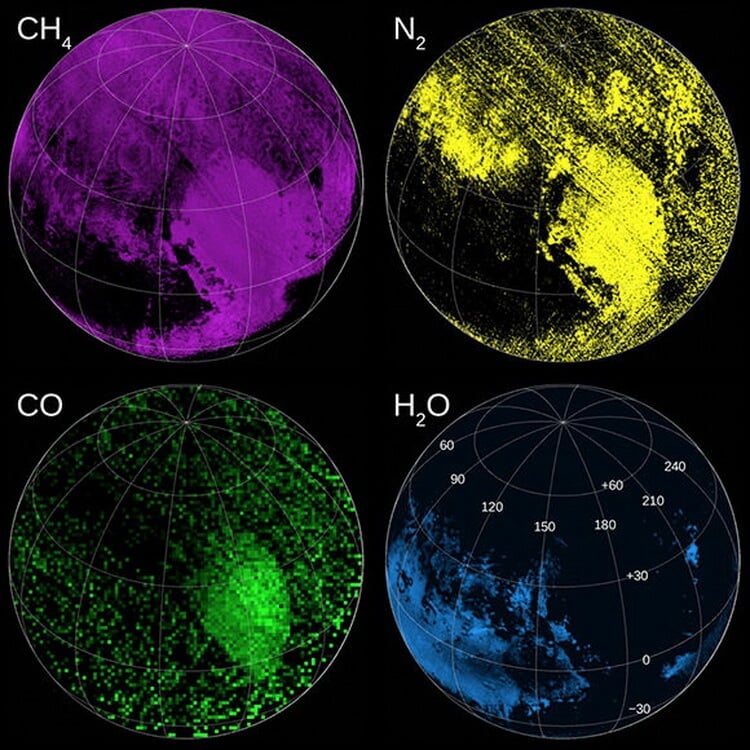
Pluto no longer a planet, but that doesn’t make it less interesting object for research. Having studied the chemical composition of Pluto, a group of researchers from the United States came to the conclusion that dwarf the world could appear as a result of collision of many comets.
Scientists from the southwest research Institute in the US analyzed data about the atmosphere of Pluto and of his ice collected by the various spacecraft, including the “New horizons” and “Rosetta”, and in the end put forward the theory of a “giant comet”.
According to the most popular model, planets are formed as a result of the accretion of the protoplanetary disk surrounding the newborn star. But Pluto could appear quite differently. The test showed that the composition of Pluto is very similar to the composition of the comet Churyumov — Gerasimenko, especially the composition of the ice covering the Plain Satellite. Is it a coincidence? The researchers do not think so.
Smooth ice Plains Satellite in the Pluton is composed mainly of nitrogen. On Pluto is so cold that the gas is there in solid form. A large amount of nitrogen can be explained by the fact that Pluto was formed as a result of the collision of millions of objects, similar to the composition of the comet Churyumov — Gerasimenko, explains one of the authors, a planetary scientist Christopher Glein.

The concentration of the elements in the composition of the atmosphere of Pluto
The nitrogen on Pluto forms glaciers, which slowly travel over the surface of the dwarf planet and grind it, erasing hills and craters. The contents of this object on Pluto is unusually high, accounting for, according to the American researchers, up to 98 percent of the mass of all celestial bodies. Previously, it was suggested that the layer of nitrogen ice on Pluto was the result of a fall on nitrogen-rich comets, but a new estimate of the amount of nitrogen tend to abandon the idea.
Scientists have modeled the formation of Pluto from comets and came to an even more exotic conclusion: a dwarf planet is mostly inherited stuff from comets, but its composition is affected… liquid water, possibly an ocean under the surface.
Comet model explained another mystery of Pluto — low (in comparison with other Solar system objects), the content of carbon monoxide. According to the cometary model, the whole monoxide could be concluded in the depths of the dwarf planet. The accretion model, with great difficulty, explains the shortcoming, therefore, the authors believe that they are closer to the truth than those who believe that Pluto appeared just as the planets of the Solar system.
Article with description of the comet model of the formation of Pluto accepted for publication in the journal Icarus, you can read it in the library arXiv.org.
Pluto may be a giant dump of comets
Nikolai Khizhnyak